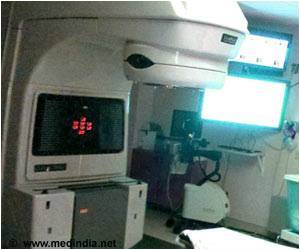
But despite its obvious advantages for patient comfort and convenience – and the associated cost savings – this so-called single-fraction treatment has yet to be adopted in routine practice. That's the finding of a new study from researchers led by the Perelman School of Medicine at the University of Pennsylvania published today in JAMA.
"Increased use of single fraction treatment would achieve the Holy Grail of health reform, which is real improvements in patient care at substantial cost savings," said the new study's lead author, Justin E. Bekelman, MD, an assistant professor of Radiation Oncology in Penn Medicine’s Abramson Cancer Center. Yet so far, he notes, "despite the evidence, single fraction treatment is used rarely and it's reserved for patients with the poorest prognosis."
Bekelman and his colleagues examined at a group of 3,050 patients 65 years and older treated with radiotherapy for advanced prostate cancer and bone metastases. In the analysis of patients drawn from the national Surveillance, Epidemiology and End Results (SEER)-Medicare database, they found that only 3 percent of patients studied received just single-fraction treatment, and nearly half the patients had more than 10 treatments. The costs of the excess treatments, the authors found, were substantial: Mean 45-day radiotherapy-related expenditures were 62 percent lower for patients who received one treatment, at $1,873 for single vs. $4,967 for multiple fractions.
Professional societies have recommended single-fraction treatment over multiple fractions for routine pain control, except in cases with complications that require specialized therapy, such as spinal cord compression or broken bones caused by tumors.
Bekelman's findings underscore the importance of efforts such as the Choosing Wisely campaign, which seeks to identify and promote medical practices that offer the highest value and best outcome for patients. Bekelman's data shows that patients are routinely receiving extra radiation treatments that drive up health care costs, without conferring additional benefits to patients.
Advertisement
Source-Eurekalert















